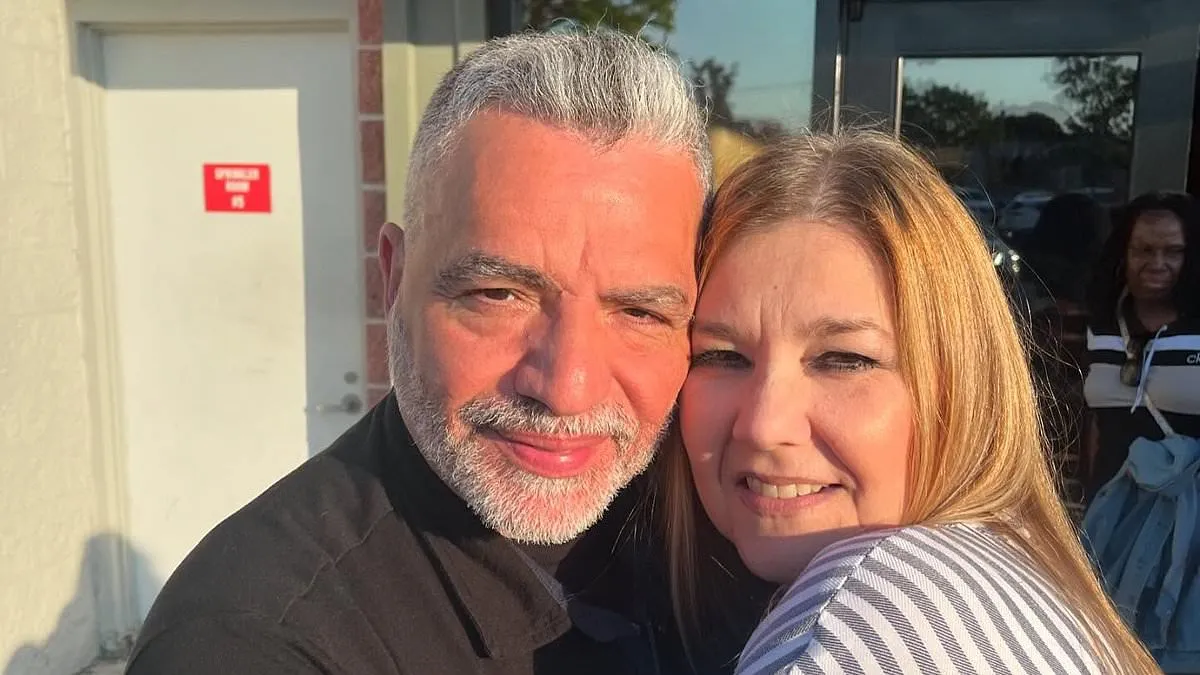
Nestor Montalvo, a 61-year-old retired New York police officer, experienced a sudden and alarming medical emergency that changed his life forever. It all began with a pounding headache that felt akin to a hangover, despite his abstinence from alcohol. Almost immediately, he noticed his vision blurring, and as he attempted to rise, the right side of his body went numb, causing him to collapse. In a state of confusion and fear, Montalvo's wife promptly called 911, leading to his swift transport to the hospital.
Reflecting on that terrifying moment, Montalvo recounted, "Everything started spinning. I went to stand up, and I fell. I just didn't understand what was going on." Upon regaining consciousness, he was met with hushed conversations among family and medical professionals, discussing his grim 15 percent chance of survival. This harrowing experience was attributed to an ischemic stroke, a condition characterized by a clot obstructing blood flow to the brain, depriving it of essential oxygen. Such strokes are notorious for leading to severe complications, including death and long-term disabilities, making stroke a leading cause of long-term disability in the United States.
Ischemic strokes account for a staggering 87 percent of all stroke cases. Common symptoms, which Montalvo experienced, include sudden weakness or numbness, difficulty in speaking or understanding language, vision disturbances, severe headaches, dizziness, and loss of coordination. According to the CDC, a stroke occurs every 40 seconds in the U.S., impacting approximately 795,000 people annually. Alarmingly, every three minutes, someone succumbs to the effects of a stroke.
Montalvo's fear was palpable as he thought, "Oh my God, I'm going to die. I don't even have a chance to say goodbye to anybody." This sentiment underscores the urgency surrounding stroke treatment. Dr. Taylor Kimberley, chief of neurocritical care at Massachusetts General Hospital, emphasizes that "time is brain." The quicker a patient receives treatment, the greater the chances of minimizing brain damage, as untreated strokes can lead to severe consequences.
Upon arriving at Catholic Health's Mercy Hospital in Nassau, Long Island, Montalvo's symptoms triggered immediate stroke protocols. Once blood flow is compromised during a stroke, brain cells begin to die rapidly. Major areas of the brain, including the cerebellum and brain stem, which manage coordination and movement, are particularly vulnerable. According to Premier Neurology, between seven to 65 percent of stroke patients report experiencing headaches.
In less than ten minutes after his arrival at the hospital, Montalvo was evaluated as a potential stroke case, and just five minutes later, he underwent a CT scan for confirmation. Medical personnel promptly administered a clot-busting medication known as TNK, followed by a minor procedure to ensure the clot was fully dissolved and would not re-form. Despite initial interventions, Montalvo faced complications as his vocal cords ceased functioning, necessitating a tracheostomy—a surgical procedure that creates an opening in the throat to aid breathing.
For an entire month, Montalvo was unable to speak or swallow. However, he remained determined to recover, committing to an hour of speech therapy each day, alongside exercises designed to strengthen the muscles in his mouth and throat. After the removal of the tracheostomy tube, he underwent three additional procedures to repair his throat, eventually allowing him to enjoy a Thanksgiving meal with his family.
Nearly a year post-stroke, Montalvo is gradually reclaiming his life, although he still relies on a cane for mobility and continues outpatient treatment. Expressing his hopes for further recovery, he remarked that the journey to healing has proven to be more arduous than the stroke itself. "You take life for granted, and then when something like this happens, it wakes you up," he shared. "You hear people talk about it, and it just sounds like it's not going to happen to you. All of a sudden, it happens to you."